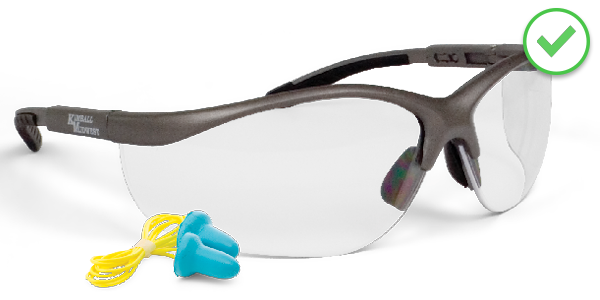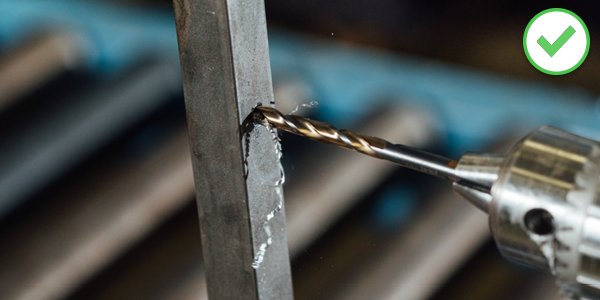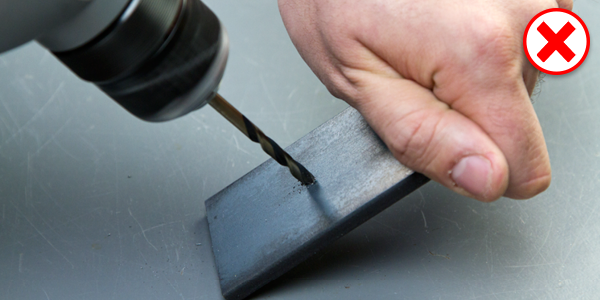You may have heard the phrase, "a little knowledge is a dangerous thing." If you work closely with cutting tools, you may think using the tool is simple as picking a drill bit, chucking it up, and going to work. But what if you think familiarity means you can skip best practices? Our goal is to provide knowledge to keep you safe as you use cutting tools. While the following do’s and don’ts may seem like common sense, most accidents happen when we do things we know we shouldn’t do.
DO:
Take Precaution
- Always wear safety glasses or goggles. A face shield can also be worn for additional protection.
- Kimball Midwest drill bit packages have a warning on them that states, “Any cutting tool may break or shatter under improper use. Government regulations require use of safety glasses and other appropriate safety equipment at all times in the vicinity of use.”

- When using heavy duty cutting tools like reamers, gloves are recommended. The drill motor may pull out of your grip if the tool hogs in.
- Wear hearing protection, especially when using an air drill.
- Air drills make a loud, high frequency sound that can damage your hearing.
- Make sure the chuck is balanced and the drill bit is true in the chuck. When you spin the drill motor, the drill bit shouldn’t wobble.
Utilize Best Practices
- Apply only enough pressure so the drill bit will cut smoothly. However, if you don’t apply enough pressure the drill won’t cut. Smooth cutting provides good chip flow to draw heat away from the cutting tool, which helps prolong its life. Ease up as the drill bit breaks through the material.

- Remember, heat is the enemy of all cutting tools. If it gets too hot, it will lose its heat treat and rapidly dull.
- Remember, heat is the enemy of all cutting tools. If it gets too hot, it will lose its heat treat and rapidly dull.
- Secure smaller material in a vise or clamp it to the work bench.
- This will prevent the work from twisting or spinning.
- Use a sharp drill bit; don’t try to force a dull drill bit into the work.
- Use cutting tool coolants or lubricants designed for the specific application you’re performing when cutting metal.
- Some lubricants are made for specific materials (i.e. aluminum), but all lubricants are designed to extend tool life and ease the cutting process.
- If your tool can accept a side handle, use it - it provides more stability.
DON'T:
Use a Damaged Tool
Use a Damaged Tool
- Use a bent or dull drill bit.If the bit is bent, it will wobble like crazy and won’t work.

- If it’s dull, you may snap the drill bit off and ram forward, potentially injuring yourself.
- Reach under or around stock that is being drilled.
- Drill with one hand while holding the material with the other.
- Attempt to free a jammed drill bit by starting and stopping the drill.
- Unplug the drill and then remove the drill bit from the work piece.
- Overreach - always keep proper footing and balance.
- If you’re off balance when you break through the back side of the material you are drilling, you will fall forward.
By learning cutting best practices and taking precautionary measures, you will be best able to avoid accidents.
.png?width=131&height=58&name=image%20(40).png)
